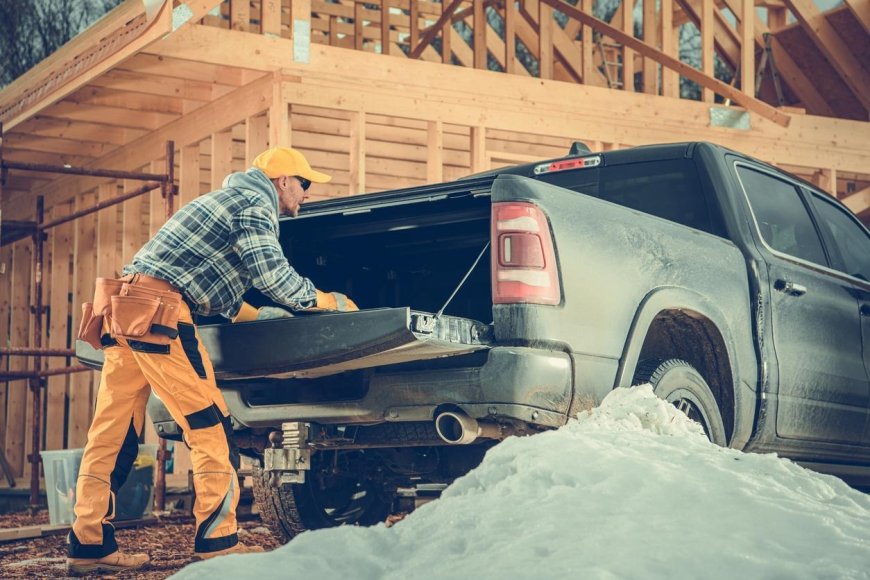Why Tradies Are Turning to GVM Upgrades for Their Utes
Discover why tradies are choosing GVM upgrades for their utes to boost load capacity, safety, and performance for heavy-duty work.

Swing open the ute’s tailgate on any busy morning and you’ll spot a mini hardware store on wheels—tool chests, corded reels, rattle guns, maybe a cement mixer strapped down for good measure. Add in a dual‑axle trailer and the factory gross vehicle mass (GVM) limit starts looking a bit skinny. Run over that number and you’re courting trouble with the law, the mechanic, and the bank manager.
Below, we’ll discuss why a growing mob of tradies are opting for engineered GVM upgrades, what the process looks like, and how a correctly rated setup keeps workhorses safe, legal, and ready for the long haul. Talk about correct setups, it’s important to get the right fit for your vehicle. So if you drive a Ranger, you need a Ford Ranger GVM upgrade.
What Is GVM, and Why It Matters to Tradies
Think of GVM as the absolute ceiling for what your ute can weigh when it rolls onto the road. On paper, many dual cabs sit around 3 200 kg, yet a steel tray, canopy, roof‑rack ladder, compressor, and drawer system can swallow half that allowance before the first hammer goes in.
Factor in a full tank of diesel, two apprentices, and a box of fasteners and you’re flirting with the edge. Throw a trailer into the mix and gross combined mass (GCM) starts biting too.
The Hidden Risks of Running Over GVM
Overweight utes don’t always sag like wet card. Sometimes they feel fine until something gives. Real‑world headaches include:
-
Insurance issues - Assessors can reject claims once they spot an overloaded compliance plate.
-
Chassis fatigue - Continuous excess load hammers mounting points and can start hairline cracks near the rear cab mounts
-
Suspension collapse - Factory coils and shocks aren’t designed for constant high static weight
-
Reduced braking efficiency - Heavier mass lengthens stopping distances and overheats rotors on downhill runs
Why Tradies Are Upgrading Their GVM
Trades today resemble mobile workshops more than point‑to‑point transport. Fixed loadouts—drawer fridges, welders, rooftop tent for remote jobs—rarely come off, and daily mileage can be brutal. Upgrading GVM is about carrying the current load without white‑knuckling the steering wheel.
Modern dual‑cabs built for comfort sometimes ignore the commercial reality of sparkies, chippies, and landscapers who need robust payloads. A certified GVM boost lets crews pack mandatory safety gear without leaving critical tools behind. No one should have to choose between the nail gun and the first‑aid kit.
What’s Involved in a GVM Upgrade?
A legitimate upgrade is an engineered package, not just a stiffer spring swap. Expect a mix of:
-
Heavy‑duty springs—progressive coils up front or multi‑leaf packs at the rear matched to constant load
-
Load‑rated shock absorbers tuned to control rebound under full payload
-
Reinforced control arms or panhard rods to maintain correct axle geometry
-
Brake improvements or extended lines where additional mass demands more stopping power
-
Compliance paperwork to update the vehicle’s identification plate and registration records
Pre‑registration kits let a brand‑new ute roll out with a higher certified mass. Post‑registration jobs demand an engineer’s sign‑off and sometimes extra brake tests, depending on state regs. Either way, it’s no driveway D‑I‑Y. The paperwork matters as much as the hardware.
How a GVM Upgrade Transforms Daily Driving
The first thing most drivers notice is that the tray no longer squats like a tired dingo when the load goes in. Spring rates matched to payload keep the chassis level, which means headlights aim where they should and steering geometry stays in spec.
With rebound‑controlled shocks, corrugated site roads feel composed instead of floaty. Braking sense sharpens too, as there’s less nose‑dive and shorter, straighter stops. That confidence trickles into every manoeuvre, whether it’s backing a trailer into a driveway or threading traffic on the way to a morning concrete pour.
What to Consider Before Getting a GVM Upgrade
-
Load profile - Is that weight on board five days a week or only during project peaks? Constant mass justifies firmer springs, and seasonal loads may suit a more moderate rate.
-
Towing frequency - Regular caravan or excavator work benefits from pairing the GVM boost with a higher tow‑ball down‑load capacity.
-
Passenger count - Crews of four need softer initial spring rates up front so the ride stays civil when the seats are empty.
-
Terrain split - City‑centric vans might favour comfort‑biased shocks, while regional teams lean towards durability over potholes and gravel.
Compliance, Certification and Insurance: The Legal Side of GVM
Because a GVM upgrade changes the dynamic load limits of the vehicle, every modification must meet national standards and state requirements. Pre‑reg packages ship with manufacturer approval, whereas post‑reg upgrades involve an accredited engineer who checks installation quality, signs off on brake performance, and issues new compliance documentation for the authorities.
Insurers then need to log the revised figures so the policy reflects the higher legal mass. Failing to update the paperwork could see a claim stalled, especially if an assessor realises the ute is heavier than recorded. Planning auxiliary mods during the upgrade phase helps the engineer account for weight distribution from the outset.
Work Smarter, Not Harder—With a Ute Built for the Load
Tradies carry gear because the job demands it, pure and simple. A certified GVM upgrade gives breathing room, sharper handling, and a chassis that’ll still be straight after years of hard yakka.
Whether you’re carting decking timber, nurse‑maiding a compressor down fire trails, or towing the site loo, an engineered suspension and compliance package means the ute works with you every single day.







